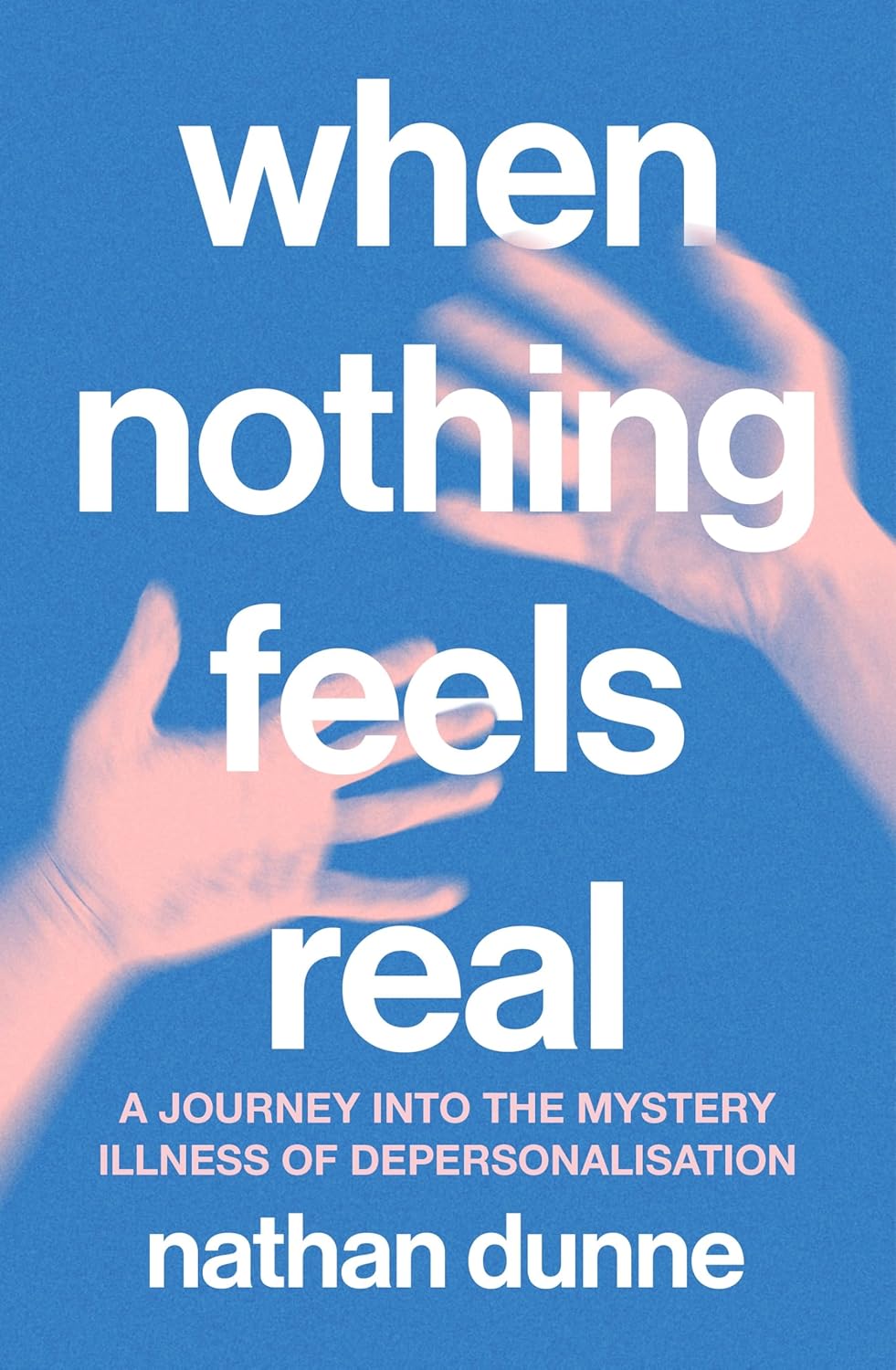
- Free Article: No
- Contents Category: Psychology
- Review Article: Yes
- Article Title: Dark pain
- Article Subtitle: A memoir of floundering and misdiagnosis
- Online Only: No
- Custom Highlight Text:
Looking down on Athens from the Acropolis, a first-time visitor observed, ‘So all this really does exist, just as we learnt at school!’ As he noted later, ‘the person who gave expression to the remark was divided … from another person who took cognizance of the remark’. The first person was surprised to see something whose reality had seemed doubtful, the second astonished that the reality of the Athenian landscape could be in doubt. Both people were named Sigmund Freud.
- Featured Image (400px * 250px):

- Alt Tag (Featured Image): Nick Haslam reviews ‘When Nothing Feels Real: A journey into the mystery illness of depersonalisation’ by Nathan Dunne
- Book 1 Title: When Nothing Feels Real
- Book 1 Subtitle: A journey into the mystery illness of depersonalisation
- Book 1 Biblio: Murdoch Books $34.99 pb, 254 pp
- Book 1 Cover Small (400 x 600):

- Book 1 Cover (800 x 1200):

- Book 1 Readings Link: https://www.readings.com.au/product/9781761500770/when-nothing-feels-real--nathan-dunne--2025--9781761500770#rac:jokjjzr6ly9m
Depersonalisation has attracted relatively little attention in the mental health world for several reasons. It is often thought to be exceedingly rare. Among the dissociative disorders, multiple personality (‘dissociative identity disorder’) has taken most of the limelight. Depersonalisation lacks a simple explanatory narrative, potentially resulting from psychological trauma, drug experiences, epileptic seizures, intense anxiety, fatigue, or strokes. Just as importantly, the feeling of depersonalisation is difficult to capture in words without resorting to metaphor, allusion, and apparent contradiction: without, in short, sounding like an existentialist philosopher.
Nathan Dunne’s When Nothing Feels Real is a fascinating first-person account of depersonalisation, made more compelling by its author’s background as an arts scholar. Armed with the conceptual weaponry of the humanities, he is well placed to explore his own condition, which developed suddenly while he was swimming in a London pond on a wintry night. A PhD student in his late twenties at the time, Dunne’s life tumbles into chaos. It is only after years of floundering and misdiagnosis that his trajectory tilts upwards.
Dunne’s description of his unsettling experiences of doubling and disembodiment is vivid. His philosophical acuity helps him recognise the paradox of being the self-absorbed ‘I’ who writes about the absence of self. When Nothing Feels Real also makes it abundantly clear that depersonalisation is not just a puzzling philosophical state, but also a terrifying emotional and interpersonal predicament. Dunne brings to life both its ‘dark pain’ and its pervasive numbing, a combination that remains obscure despite his attempts to explain it. He also reveals how depersonalisation affects his close relationships and waxes and wanes with experiences of love and loss. All forms of distress take a toll on relationships, but people with depersonalisation – like other conditions carrying the whiff of ‘hysteria’ – often find little sympathy from others, their suffering dismissed as self-dramatising, whiny, or adolescent.
Dunne’s analysis of the causes of depersonalisation is less compelling. A brief analysis of the condition’s neurobiology is laid out, but so many brain structures are implicated, in so many interconnecting ways, that no clear mechanism emerges. Equally mysterious is why Dunne seemingly developed depersonalisation out of the blue and later in life than in most cases. He attributes this event to the accumulation of ‘small-t traumas’, but these come across as ordinary life stresses insufficient to produce a catastrophic psychic collapse. One limitation of When Nothing Feels Real is that it presents no significant autobiographical context for its central event: the action starts with the fateful swim, but the reader learns almost nothing about Dunne’s prior history or personality. As a result, the breakdown appears to be a random visitation by fate rather than something with psychological meaning.
A recurring theme in the book, as it is for many people experiencing under-recognised conditions, is the promise and frustration of diagnosis. The ‘golden word’, as Dunne calls the correct diagnosis, will clarify and validate their experience and light a path towards treatment and recovery. However, the aver-age time to receive a correct diagnosis of depersonalisation is at least eight years, Dunne writes, and in his own case it took more than three. He receives an assortment of unhelpful labels and treatments along the way and is scathing of the doctors who got things wrong, to the point of criticising their footwear and voices (one ‘repulsive’, another ‘frog-like’).
We should perhaps feel a little sympathy for these professionals, however grotesque and amphibious. Dunne’s condition is less common than many of the problems they encounter and harder for patients to communicate, and depersonalisation can occur as a symptom of many other conditions. Until recently the condition was neglected in professional training and proven treatments were lacking. More fundamentally, the diagnosis of mental illness is intrinsically messy and provisional. The idea that psychiatric conditions are clearly definable entities, each with a unique cause and optimal treatment, is an illusion, as is the belief that a diagnosis is ever ‘correct’ in some deep, metaphysical sense rather than being more or less helpful, pragmatically. One irony of the book is that when Dunne ultimately finds a clinician who diagnoses depersonalisation, the therapies he employs are those are more commonly used to treat anxiety, depression, and post-traumatic stress disorder, all ‘misdiagnoses’.
The battle for greater recognition of depersonalisation is an important one, and Dunne makes a compelling case for it. These battles tend to follow a similar plan. Proponents struggle against a professional establishment, arguing that their condition is underdiagnosed and under-researched in the crowded marketplace of mental health. Gradually, professional and public attention rises and rates of diagnosis increase. And then, almost inevitably, a process of over-diagnosis begins when social media gets involved. That step may or may not be in depersonalisation’s future, but we should be thankful for Nathan’s Dunne’s evocative, soul-baring book for giving the condition a voice.


Comments powered by CComment